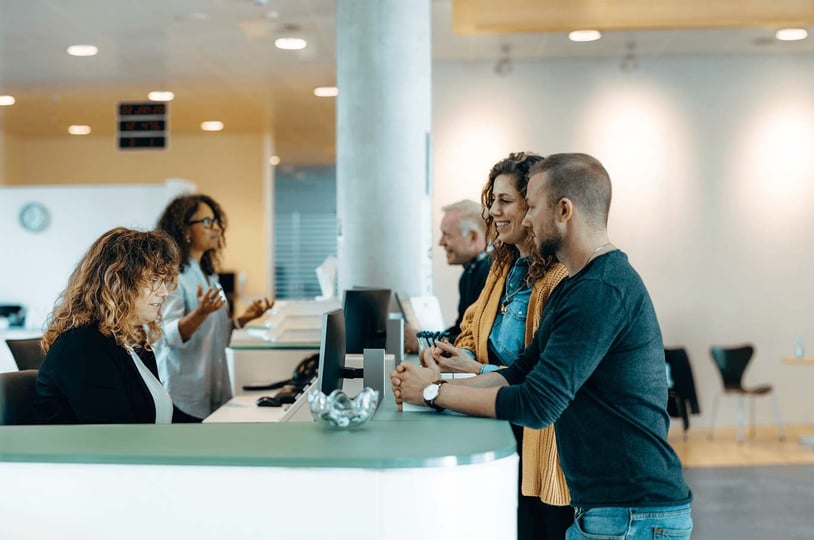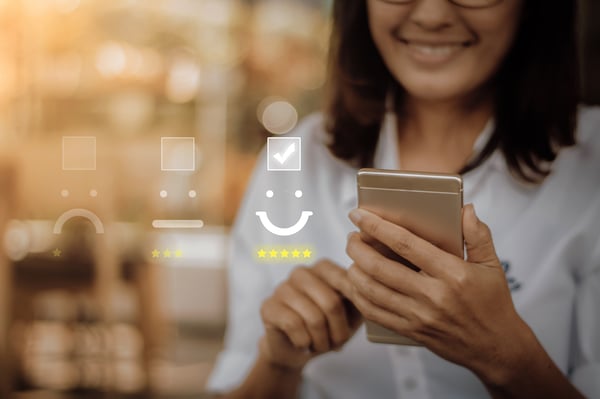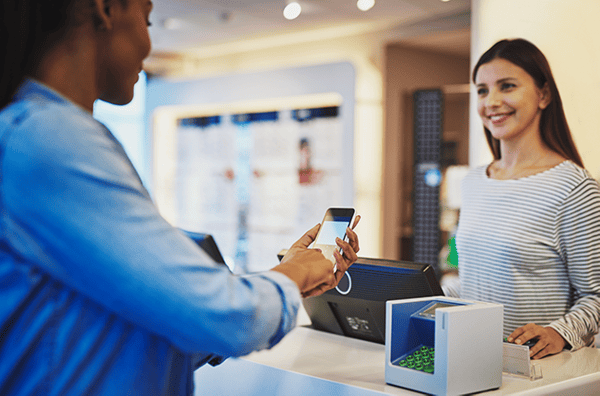- Blog Overview
- Knowledge
- Citizen experience management is revitalizing government agencies

Citizen experience management is revitalizing government agencies
Mark Sarria |March 15 2022 | 7 min
At a time when citizens are demanding better service, government agencies are striving to find solutions for how to make it happen.
The Biden administration recently updated guidance from the Office of Management and Budget [OMB] to improve customer experience. This executive order directs agencies to modernize their programs, reduce the “time tax” associated with seeking out services, and test new online tools and technologies that can make it easier for people to have a good experience.
To answer this need, the public sector has been taking notes from the private sector. Today, government agencies are developing and implementing a seamless, integrated, and strategic citizen experience that matches — or even exceeds — the elevated customer experience that so many have become accustomed to in the private sector.
A better experience
Optimal citizen experience management means creating operational efficiencies that in turn seamlessly produce a more positive visit for members of the public. Digitalization solves many — if not most — of these problems. By implementing a sophisticated queue management system, also known as customer flow- or customer journey management system, government offices will gain the data and capabilities to optimize staff efficiency and overall quality of service.
Lost time is a significant cost for individuals. Through a smart queuing system and customer flow solution, the entire citizen experience from scheduling visits, to reducing wait times, to enhancing communication can be improved. The system makes it easy to set up an appointment with the best qualified government employee and with the information needed for a successful visit. Additionally, post-visit feedback can readily be collected to continually help agencies meet expectations.
The power of appointments
An appointment management system is just that — it allows the citizen to schedule a visit for a time that works for them. While it may seem like a simple idea, it actually has a much more far-reaching impact.
By allowing citizens to schedule appointments, agencies gain more control over customer flow and visitor volume, which in turn transforms resource planning. With the visitor’s need at the forefront, employees can be better matched and more prepared to offer assistance. Additionally, rules can be put in place for such things as maximum number of bookings, resource dependencies, blocked availability, or scheduling outside of regular hours. This means that the workday and workload can be managed proactively.
When citizens are able to easily book, reschedule, or cancel appointments they have more control over their experience from the very start. Upon scheduling the appointment, the system can remind them of what information they need to bring so a trip isn’t wasted. Also, by scheduling appointments, waiting areas have minimal crowds or lines, which promotes safer distancing. And this also means a decrease in both actual and perceived wait times. Less time waiting repeatedly translates into a better overall experience.
Time of arrival
Upon arrival it is time for the citizen to check in. Traditionally that meant it was time for the citizen to begin that dreaded long wait. However, as today’s visitors go from online to onsite, they are greeted by a self-service kiosk or given the ability to check in via their mobile phone and announce their arrival.
A smart, simple-to-use, self-service kiosk acts as a digital receptionist for many offices. The kiosk becomes a hub to inform everyone involved in the process. The staff is made aware of the arrival, while the citizen feels in control and engaged from the moment they enter the office. For walk-ins without an appointment, kiosks not only allow them to check availability, but can help minimize wait times as well, slotting them in for first available.
For offices offering mobile self check-in and virtual queuing, citizens are able to hop into line via their mobile device from anywhere. All the information they need to manage their experience — including the expected wait time — is provided. With the mobile ticket, citizens can see where they are in the process and then receive notifications when it is their turn, setting expectations for each step of the process.
Ongoing optimization
The citizen’s journey may conclude at the end of the appointment, but to continually improve the experience government agencies need real-time feedback. Whether through a quick rating of the visit right in the office or a more extensive online survey, reviewing the data and using it to optimize visits is invaluable in revitalizing the perception of visiting government agencies.
The importance of CX cannot be underestimated. Just as leaders should look at financial and operational performance, they need to make sure that their citizen experience is up-to-par with what members of the public are expecting from them. And with the capabilities of queue management and customer flow management, government agencies are able to provide the best and most efficient citizen experience that their tax dollars can buy.
If you are interested to learn more about how you could implement citizen journey management in your facilities and improve their experience, download our guide.









